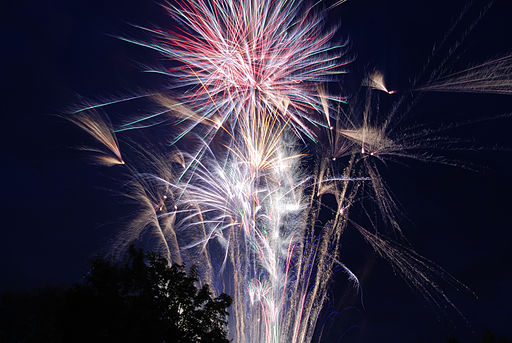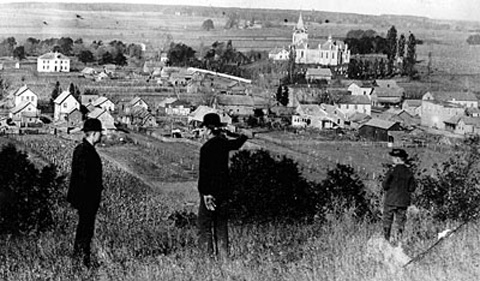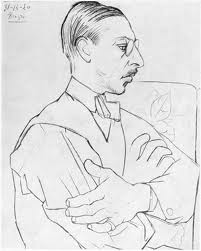 The lazy days of summer are here in the Northern Hemisphere. For many of us this is a time to rest and recharge, whether in the cool shade of a back yard hammock or the sun and sand of the beach. What music could be more appropriately relaxing and soothing than a lullaby, with its gentle rocking rhythm and simple repetitive melody?
The lazy days of summer are here in the Northern Hemisphere. For many of us this is a time to rest and recharge, whether in the cool shade of a back yard hammock or the sun and sand of the beach. What music could be more appropriately relaxing and soothing than a lullaby, with its gentle rocking rhythm and simple repetitive melody?
[typography font=”Cantarell” size=”28″ size_format=”px”]Lullaby [/typography]
Barely out of his teenage years, George Gershwin wrote Lullaby in 1919 as a harmony exercise for his composition teacher. Even in this homework assignment, Gershwin’s distinct musical vocabulary seems fully formed. As you listen, consider what characteristics make the music sound distinctly “Gershwin.” Listen closely to the thick, shimmering inner voices under the melody. Notice that they often move in parallel motion. Do you hear anything that sounds like jazz or the French Impressionism of Debussy or Ravel? Pay attention to the harmony around 3:47-4:10 and 6:35-6:41. What kinds of emotions do you feel as you listen to the opening melody and the section beginning at 5:16?
https://www.youtube.com/watch?v=2z929ncJ9dg
[button link=”https://itunes.apple.com/us/album/gershwin-rhapsody-in-blue/id442994212″]Find on iTunes[/button] [button link=”https://www.amazon.com/Gershwin-Lullaby-string-orchestra/dp/B004VJI076″]Find on Amazon[/button]
[typography font=”Cantarell” size=”28″ size_format=”px”]Prelude No. 2[/typography]
Now let’s listen to a piece that Gershwin described as “a sort of blues lullaby.” This is Prelude No. 2 for piano, performed by Arthur Rubinstein:
[button link=”https://itunes.apple.com/us/album/gershwin-3-preludes-single/id586138952″]Find on iTunes[/button] [button link=”https://www.amazon.com/Bernstein-Clarinet-Sonata-Gershwin-Preludes/dp/B003QLY5HY”]Find on Amazon[/button]
Did you notice how Prelude No. 2, constructed on the blues scale, veers unexpectedly between minor and major? As the melody almost restlessly searches, there is something constant and unrelenting about the undulating chromatic harmony in the left hand. The tension between these two simultaneous musical personalities (one dreaming and striving, the other accepting reality) is resolved, only at the end of the phrase, as the impetuous top voice falls back in resignation. Despite its far flung adventures, the melody ends where it began (0:26). Notice that Gershwin never gives us a straightforward minor chord for these resolutions. It’s always a murky, crunching dissonance (1:10). Consider the overall mood of the music. Can you hear the deep sadness and yearning that characterizes the blues style? Did the last chord surprise you? Considering what came before, what is the significance of Gershwin’s choice to end this way?
[typography font=”Cantarell” size=”28″ size_format=”px”]Summertime[/typography]
Finally, let’s listen to the most famous of the three lullabies, Summertime from Gershwin’s opera, Porgy and Bess. Rob Kapilow provides a fascinating analysis in his What Makes It Great series. Can you feel the sultry, oppressive heat and humidity of the fictional Catfish Row, Charleston, South Carolina at the height of summer? How does the music create this atmosphere? Here is a clip from the opera:
[button link=”https://itunes.apple.com/us/album/gershwins-porgy-bess-new-broadway/id528266857″]Find on iTunes[/button] [button link=”https://www.amazon.com/Porgy-Bess-New-Broadway-Cast/dp/B007FEHA34″]Find on Amazon[/button]
As a fun bonus, let’s finish up with the bigger than life swing of Gershwin’s Broadway side. Here is the Girl Crazy Overture. Please share your thoughts in the thread below. Tell us what you hear in the music of George Gershwin.






